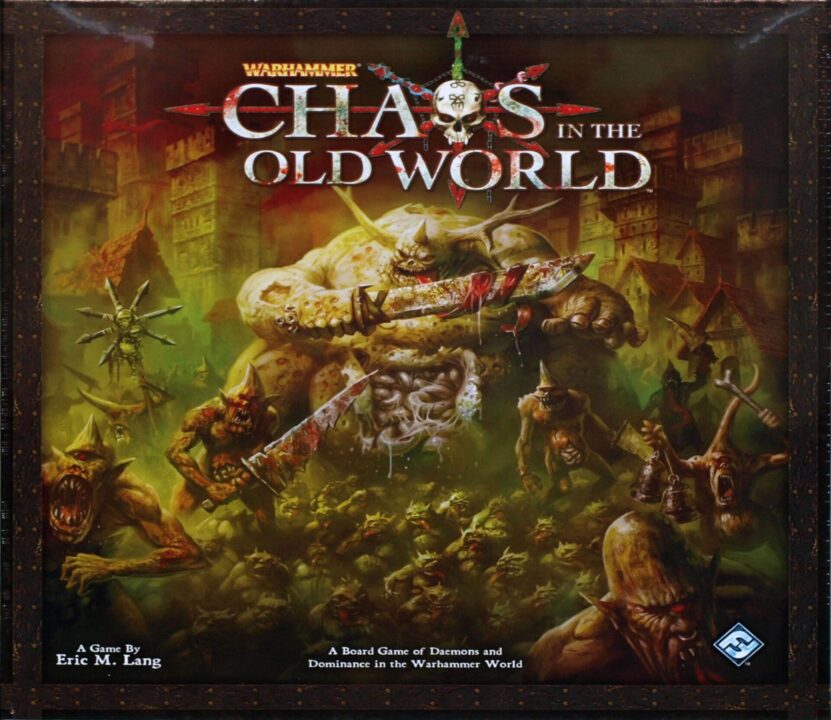Overview
Welcome to our review of Chaos in the Old World! In this review, we’ll delve into the gameplay mechanics, theme and atmosphere, player interaction, and replay value of this immersive and strategic board game. Chaos in the Old World is set in the dark and brutal Warhammer Fantasy universe, where players take on the roles of powerful chaos gods. With its asymmetrical factions, deep gameplay mechanics, and intense player interaction, Chaos in the Old World promises an engaging and thrilling tabletop experience. So let’s dive into the chaotic realms!
How It Plays
Setting up
In Chaos in the Old World, players begin by selecting one of the four chaos gods to represent. Each god has its own unique abilities, units, and cards that will shape their gameplay strategy. The game board is set up with regions to be conquered and controlled, and players place their starting units in specific locations.
Gameplay
The game is played over a series of rounds, with each round consisting of three phases. In the Power phase, players gain power points that can be used to perform various actions, such as deploying units, upgrading abilities, or playing event cards. The action phase follows, where players take turns performing actions, such as moving units, attacking opponents, or spreading corruption. The round concludes with the Doom phase, where players must check for corruption victory conditions.
Winning the game
The ultimate goal in Chaos in the Old World is to gain the most victory points by bringing about the ultimate Chaos victory or achieving hidden objectives specific to each chaos god. Victory points can be earned by spreading corruption, conquering regions, achieving specific conditions, or fulfilling quests. The game ends when a certain number of power and corruption markers have been placed on the game board, or when a player reaches the required number of victory points, signaling the triumph of chaos!
In summary, Chaos in the Old World is set up by selecting a chaos god and placing the starting units. Throughout the gameplay, players take turns strategically using their power points to perform actions, while aiming to gain victory points through corruption, conquest, and fulfilling objectives. The game concludes with the player who has the most victory points or brings about the ultimate Chaos victory emerging as the champion of chaos!
Want to know more? Read our extensive strategy guide for Chaos in the Old World.
Gameplay mechanics in Chaos in the Old World are both unique and enjoyable, providing players with plenty of strategic options to explore. One of the standout mechanics is the asymmetrical gameplay, with each player taking on the role of a different faction, each with their own abilities and playstyles. This adds a layer of depth and replayability to the game, as each faction requires a different approach and tactics to succeed.
Faction Abilities and Powers
Each faction in Chaos in the Old World has its own set of unique abilities and powers, allowing players to tailor their strategy to their faction’s strengths. For example, the Chaos faction thrives on spreading corruption throughout the land, while the Skaven faction excels in covert operations and surprise attacks. This variety of powers ensures that each faction feels distinct from one another and allows players to fully immerse themselves in their chosen role.
Action Point System
The game utilizes an action point system, which adds a layer of strategy and decision-making to every turn. Players must carefully consider how to allocate their limited action points to perform various actions, such as deploying units, attacking, or upgrading their faction’s abilities. This creates tense and engaging gameplay, as players must choose between different options and weigh the potential consequences of their actions.
Resource Management
In addition to the action point system, Chaos in the Old World incorporates resource management as a key gameplay mechanic. Players must balance their resources, such as power and Warpstone, to further their faction’s agenda and dominate the world. This adds another strategic element to the game, as players must carefully allocate their resources and make tactical decisions on how to spend them.
The gameplay mechanics of Chaos in the Old World are rewarding and add depth to the overall experience. The asymmetrical factions, unique powers, action point system, and resource management all contribute to the strategic nature of the game. Next, let’s delve into the fascinating theme and atmospheric elements of the game, which complement the gameplay perfectly.
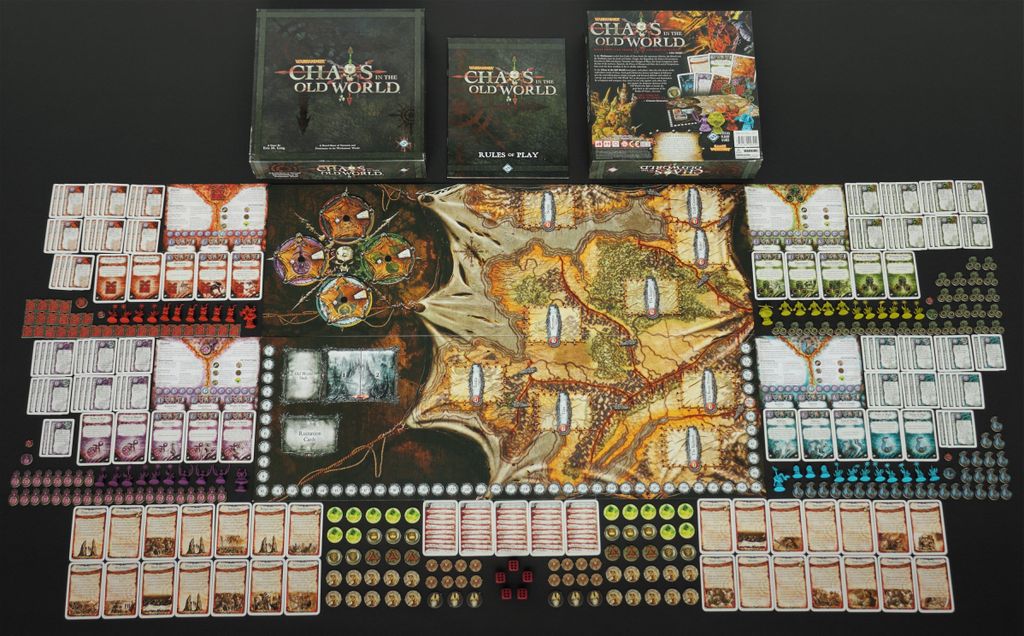
Dark and Immersive Theme
The theme of Chaos in the Old World is dark and immersive, plunging players into a world of diabolical gods and sinister forces. Set in the Warhammer Fantasy universe, the game captures the grim and brutal nature of the Chaos Gods and their eternal struggle for dominion. From the beautifully illustrated game board to the detailed miniatures, every aspect of the game’s art and design enhances the immersive experience and helps bring the theme to life.
Battle for Corruption
One of the central themes in Chaos in the Old World is the battle for corruption, as the Chaos Gods vie for control over the mortal realm. This thematic element is reflected in the gameplay mechanics, as players must strategically spread corruption, create unrest, and bring chaos to the world. This theme adds a layer of depth to the game, making the players feel like they are playing as mighty forces of darkness, manipulating events to further their dark agenda.
Conflict and Conquest
Another major aspect of the theme is the constant conflict and conquest between the factions in the game. As players vie for dominance, they must wage war, make alliances, and use their faction’s unique powers to gain advantages over their rivals. The theme is enhanced by the intense player interaction and the ever-present tension throughout the game, as players seek to outmaneuver and conquer their opponents.
Morality and Corruption
Chaos in the Old World delves into the concepts of morality and corruption, exploring the fine line between good and evil. Each faction represents a different aspect of chaos, and as players embrace their dark powers, they must confront the consequences of their actions. This thematic element adds an intriguing layer of narrative and moral dilemma to the game, making players question their choices and the lengths they are willing to go to achieve victory.
The theme and atmosphere of Chaos in the Old World are truly captivating, immersing players in a world of darkness, conflict, and moral ambiguity. The dark and immersive theme, the battle for corruption, the conflict and conquest, and the exploration of morality and corruption all contribute to making the game a memorable and engaging experience. Next, let’s delve into the exciting aspect of player interaction, which brings the game to life in a whole new way.
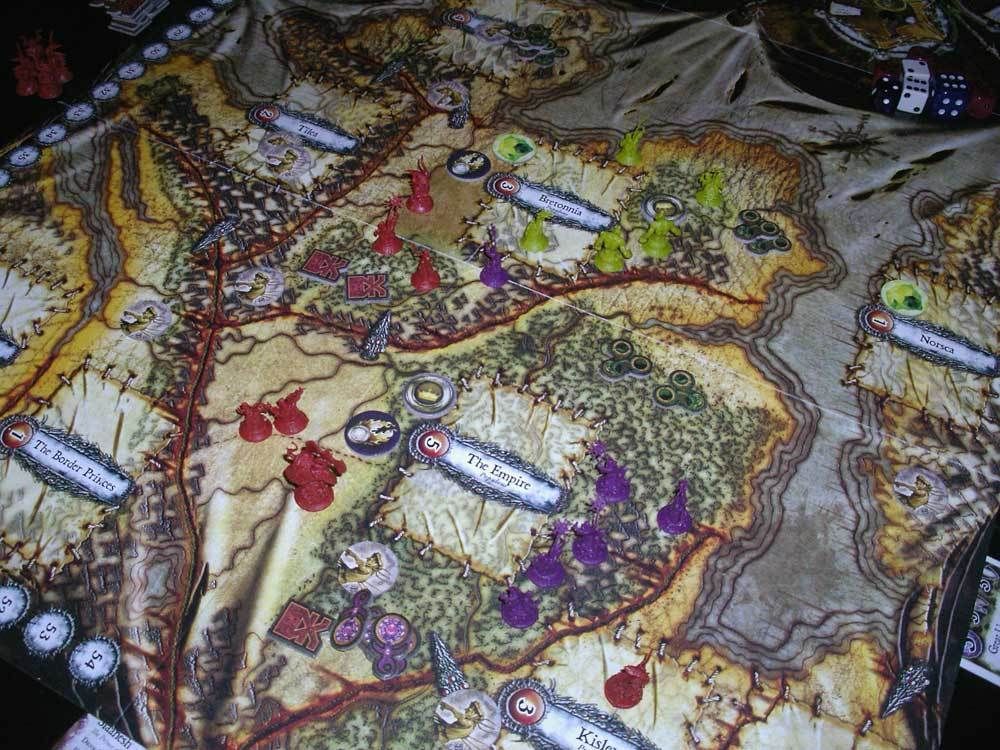
Player interaction is a key aspect of Chaos in the Old World, creating intense and strategic gameplay moments that keep players engaged throughout the experience. From battling each other for control over territories to forming alliances and backstabbing rivals, the game thrives on the interactions between players.
Territorial Control and Conflict
One of the main forms of player interaction in Chaos in the Old World revolves around territorial control and conflict. Players must strategically place their units on the game board, vying for dominance over specific regions. This leads to fierce battles and confrontations as each faction seeks to expand its influence and eradicate opponents. The tension and excitement that arise from these conflicts create memorable moments during gameplay.
Alliances and Betrayals
In Chaos in the Old World, players have the opportunity to form alliances with other factions, enabling them to work together towards a common goal. However, these alliances are often fragile and can quickly turn into betrayals as players seize opportunities to gain the upper hand. This element of player interaction adds an intriguing level of negotiation and deception to the game, where trust can be shattered at any moment.
Strategic Card Play
Player interaction is also facilitated through the strategic card play in Chaos in the Old World. Throughout the game, players utilize cards to unleash devastating powers, alter the course of battles, or disrupt their opponents’ plans. The timing and effectiveness of these cards can greatly impact the outcome of the game, creating tension and thrilling moments as players strategize and react to their opponents’ moves.
Table Talk and Negotiation
The game encourages table talk and negotiation among players as they strategize, bargain, and plead for alliances or support. This social aspect of the game enhances the overall player interaction, fostering lively discussions and fostering a sense of camaraderie or rivalry. Whether it’s convincing other players to unite against a common enemy or manipulating the situation to benefit oneself, the negotiation and diplomacy in Chaos in the Old World make for engaging and dynamic gameplay.
Player interaction in Chaos in the Old World is a dynamic and essential component that drives the game forward. The territorial control and conflict, alliances and betrayals, strategic card play, and table talk and negotiation all contribute to the thrilling and strategic nature of the game. Next, let’s explore the replay value of Chaos in the Old World, keeping players coming back for more…
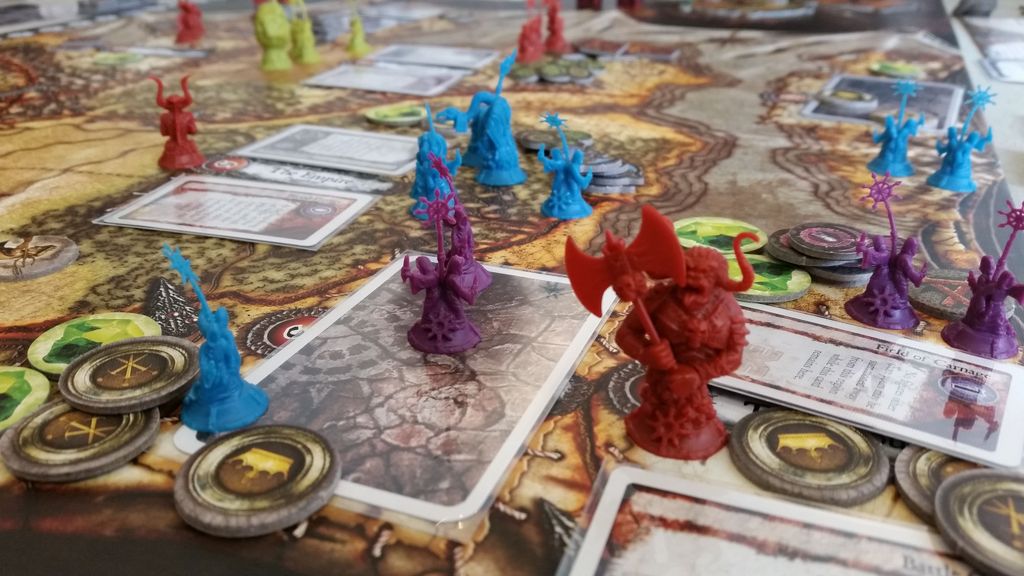
Replay value is a crucial element of any board game, and Chaos in the Old World excels in this regard, offering players a wealth of content and variability for multiple playthroughs. The combination of its asymmetrical factions, tactical gameplay, and unpredictable outcomes ensures that each game feels fresh and different.
Asymmetrical Factions and Playstyles
One of the main reasons Chaos in the Old World has high replay value is its asymmetrical factions. Each faction offers a unique set of abilities, powers, and playstyles, creating distinct experiences for players. Whether you choose to embrace the brutal dominance of the Khorne faction or the manipulation and corruption of the Nurgle faction, each decision leads to different strategies and tactics. With four different Chaos Gods to choose from, the game provides ample opportunity for exploring different factions and their playstyles.
Varying Strategies and Tactics
The tactical depth within Chaos in the Old World contributes significantly to its replayability. The game presents players with strategic decisions at every turn, from deploying units strategically to managing resources efficiently. The dynamic nature of the game allows for multiple strategies and paths to victory, providing players with ample opportunities to diversify their tactics in subsequent playthroughs. Trying out new strategies and adapting to different situations keeps the game engaging and entices players to return for more.
Random Events and Unpredictable Outcomes
Chaos in the Old World introduces randomness and uncertainty through its event cards, which spice up the gameplay and create unpredictable outcomes. These event cards can lead to sudden shifts in power dynamics, introducing unexpected challenges and opportunities. The added element of chance keeps the game exciting and fosters replayability, as players never know how the events might influence their strategy and the overall outcome of the game.
In conclusion, Chaos in the Old World offers high replay value through its asymmetrical factions, varying strategies and tactics, and random events. Each playthrough presents players with new challenges and opportunities, ensuring that no two games are alike. With its depth of gameplay and ever-changing dynamics, Chaos in the Old World is a highly recommended game for board game enthusiasts who enjoy strategic and engaging experiences.
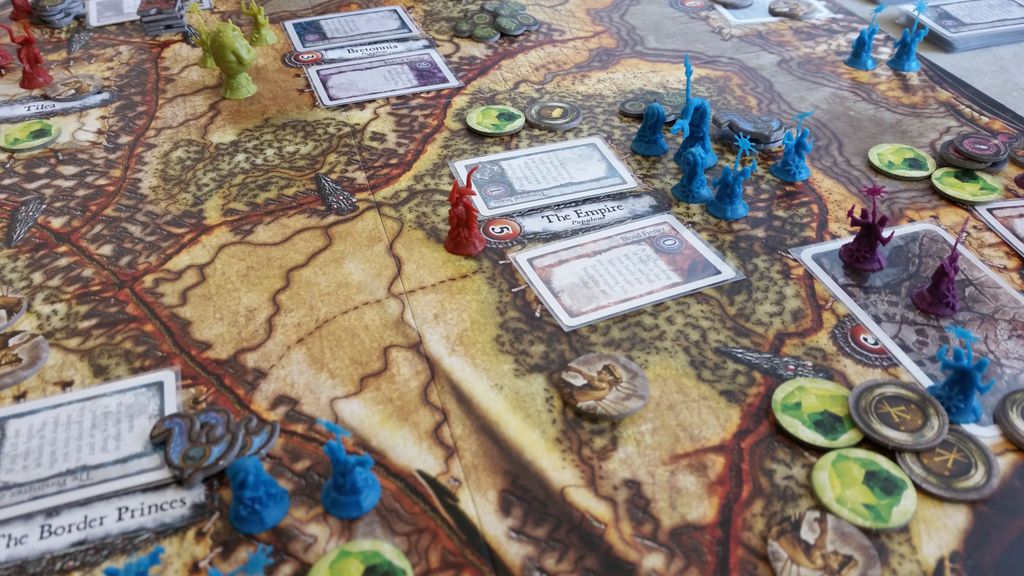
Conclusion
After exploring the gameplay mechanics, theme and atmosphere, player interaction, and replay value of Chaos in the Old World, it is clear that this game offers a captivating and strategic experience. The asymmetrical factions, tactical decision-making, intense player interaction, and high replay value make Chaos in the Old World a standout board game in the realm of dark and immersive tabletop adventures. Whether you are a fan of the Warhammer Fantasy universe or simply enjoy deep and engaging gameplay, Chaos in the Old World will not disappoint. Prepare to immerse yourself in the dark realms and conquer the world with chaos!

